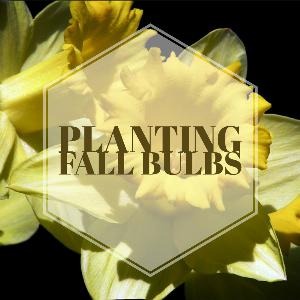The easiest color in your yard comes from bulbs you plant in the fall. Fall bulbs include tulips, daffodils, crocus, allium, anemones, and hyacinths, as well as a few others. Fall bulbs should be planted before really cold weather arrives to give them a chance to establish new roots. If you are planting late, soaking the bulbs for twelve hours just before you plant them will help them get a jump start on forming new roots. Bulbs love a soil that drains well, so if you have heavy clay soil, add sand along with a good amount of organic material to improve the drainage. As you work on the soil, add Hi-Yield Bone Meal and Hi-Yield Dutch Bulb Food for a real show next spring. If you have fall bulbs already planted from a previous year, be sure to sprinkle bone meal and fertilizer over them, too. Most bulbs will not do well in shade, so only very early bloomers can be planted under trees. Avoid planting bulbs on the north side of your house, because most bulbs require full sun. If not, they will be spindly and have sparse blooms. Most perennials and annuals are perfect companions for bulbs. Their growing foliage hides the fading leaves of the bulbs and protect the bulbs as they go dormant. You can easily plant bulbs around existing perennials and shrubbery, provided they will get enough sunlight. Mice and gophers love tulip bulbs and will dig down and eat them. To protect them, you can put crushed gravel around, but not under, the bulb, then finish covering with soil. Deer and mice do not like daffodils or allium bulbs, so these bulbs are perfect choices where these pests might be. Some bulbs can come up in grassy areas for a natural look, and the best bulbs for naturalization are daffodils, crocus, and early alliums. Just lift up a patch of sod and plant the bulb under it at the proper depth and replace the sod. The daffodils and crocus will have no trouble coming up through the sod in the spring. Fall is also a wonderful time to dig up old bulbs and separate them, or you can lift and separate next spring after the foliage has faded but is still in place. If you keep them separated, they will continue to bloom beautifully for years.




